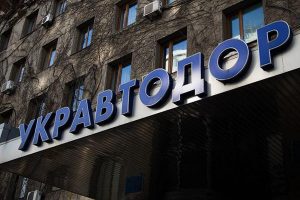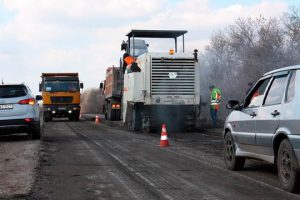
The Government of Canada has officially informed the Ukrainian Embassy in Ottawa of the completion of domestic procedures necessary for the entry into force of the Agreement on joint production of audiovisual works between states.
According to the Embassy of Ukraine in Canada, subject to joint production, the agreement will allow Ukrainian producers to qualify in Canada for budgetary support, tax breaks and discounts on distribution. The agreement provides for similar preferences for Canadian artists who will shoot in Ukraine.
“It will be cheaper and easier for our TV crews and filmmakers to work in Canada and with Canadians. I’m glad we were able to explain in Ottawa the mutual benefits of such a partnership. We are waiting for the Ukrainian-Canadian Oscar!” Ambassador of Ukraine to Canada Andriy Shevchenko said.
The document was signed during President Zelensky’s visit to Toronto last year. The Verkhovna Rada ratified it in September 2020.The agreement will enter into force on January 1, 2021.

The State Automobile Roads Agency of Ukraine (Ukravtodor) installed high-precision sensors of the Q-Free Norwegian company at the site of the Weigh-in-Motion (WiM) complex on the M-02 Kipti-Hlukhiv-Bachivsk road in Chernihiv region.
The Ukravtodor press service told Interfax-Ukraine that the equipment of the IRD company (Canada) was used on the previously installed WiM complexes.
“This is the first experience of Ukrainian specialists working with Norwegian equipment, so the installation took place under surveillance of European supervisors. Sensor systems from the same manufacturer will also be installed at the Weigh-in-Motion facility in Mykolaiv region, on the N-24 Blahovischenske-Mykolaiv road,” Ukravtodor said. In 2020, the State Automobile Roads Agency is scaling a network of WiM sites in all regions of the country: in November, a facility was put into operation in Poltava region on the M-22 Poltava-Oleksandria road. At the second object in Poltava region on the N-31 Dnipro-Tsarychanka-Kobeliaky-Reshetylivka road, the installation of the frame has already been finished, and the hanging of cameras and scanners is starting.
On the M-25 Solomonove-Velyka Dobron-Yanoshi checkpoint in Zakarpattia region is also preparing for the installation of all elements of the WiM system. At the end of 2019, within Ukraine’s cooperation with the International Bank for Reconstruction and Development (the road sector development project), Ukravtodor launched six WiM complexes at the entrances to Kyiv.
The Weigh-in-Motion information collection and analysis system works in real time, recording the weight, dimensions, license plates and speed of vehicles.
Ukrtransbezpeka can use data of WiM sites for setting fines in the “preselection” mode. For automatic processing of fines, it is necessary to improve legislation.
By the end of 2020, the number of WiM sites is planned to be increased to 20 ones throughout Ukraine, and in 2021, according to the plans of Ukravtodor, their number should triple.

Ukraine in January-November 2020 increased export of poultry by 5.1% compared to the same period in 2019, to 394,240 tonnes, the State Customs Service has said.
According to its data, in monetary terms, export of these products decreased by 3.6%, to $512.33 million.
At the same time, import of poultry for the 11 months of this year decreased by 17.4%, to 100,030 tonnes, in monetary terms by 13.1%, to $41.88 million.
Export of pork, according to the State Customs Service, rose by 30.2%, to 2,670 tonnes. These products were delivered for $5.8 million, which is 23.9% more than in January-November 2019. Pork import for the 11 months of 2020 increased by 22.6%, to 26,880 tonnes, in monetary terms by 25.6%, to $52.54 million.
In addition, during the specified period, Ukraine reduced export of eggs by 20.8%, to 102,130 tonnes, in monetary terms by 11.7%, to $92.09 million. Egg imports fell by 1.9 times, to 2,670 tonnes, in money terms by 2 times, to $9.58 million.

A loan from the European Investment Bank (EIB) in the amount of EUR 100 million will be directed to overhaul of 183 km of roads in Luhansk region, the State Agency for Highways of Ukraine (Ukravtodor) reported.
Funds are provided for capital and current average repairs of the sections:
– route N-26 Chuhuiv – Milove: it covers more than a hundred kilometers, which are planned to be repaired for borrowed funds, because this road connects Luhansk and Kharkiv regions;
– the road P-66 checkpoint “Demyno-Oleksandrivka” – Svatove – Lysychansk – Luhansk, which starts from the border with Russia, a 35 km section has already been repaired, the road is planned to be fully restored;
– road T-13-02 checkpoint “Taniushivka” – Starobilsk – Bakhmut, where work will begin at once on two sections, with a total length of 42 km.
“In 2020, Ukravtodor completed a record amount of road work in Luhansk region: almost 200 km were restored at the beginning of December, and work continues for another 100 km. For comparison, over the past 10 years, only 130 km of roads were renewed. This is one of the most low indicators in the country,” said head of Ukravtodor Oleksandr Kubrakov.
According to him, in 2021, thanks to the funds of international partners, Ukravtodor will restore the transport “triangle” along the Severodonetsk-Starobilsk-Svatove route with access to Troyitske in the north of the region, and in general, thanks to the Big Construction program, a modern road network in the region.
Earlier, the World Bank for Reconstruction and Development has already provided co-financing for this project in the amount of $65 million.